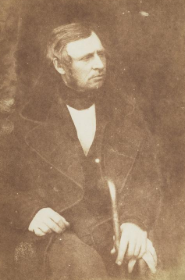연결 플러그
Mating plug
짝짓기 플러그는 교미 플러그, 정자 플러그, 질 플러그 또는 스피라기스로도 알려져 있으며, 일부 종의 짝짓기에 사용되는 젤라틴 분비물이다.그것은 수컷에 의해 질과 같은 여성 생식기에 축적되고 나중에 플러그로 굳어지거나 함께 [1]접착된다.암컷은 나중에 플러그를 뽑을 수 있지만, 수컷의 정자는 여전히 수정의 결정적 요소인 난자에 도달하는 데 있어 시간적으로 유리하다.
짝짓기 플러그는 정자 경쟁에서 중요한 역할을 하며 능동 짝짓기 보호의 대체적이고 더 유리한 전략으로 작용할 수 있습니다.일부 종에서는 이러한 수동적인 짝 보호 전략이 큰 수컷 크기의 [2]선택을 감소시킬 수 있다.이러한 전략은 수컷이 능동적인 짝을 [2]지키는 것보다 새로운 암컷 짝을 찾는 데 더 많은 시간을 할애함으로써 생식 성공을 증가시킬 수 있기 때문에 유리할 수 있다.
구성.

봄부스 테레스트리스의 결합 플러그는 화학 분석 결과 팔미트산, 리놀산, 올레산, 스테아린, 사이클로프롤린으로 [3]구성되었다.(사이클로프롤프롤린 미포함) 산만으로도 플러그를 만들기에 충분한 것으로 나타났습니다.연구자들은 시클로프롤린(cycloproylproline)이 암컷의 교배에 대한 감수성을 떨어뜨린다는 가설을 세웠다.
자연발생
짝짓기 플러그는 여러 영장류,[4][2][5] 캥거루,[6][7][8] 벌,[9] 파충류,[10] 쥐, 설치류,[11] 전갈,[12] 쥐,[13] 그리고 [14]거미를 포함한 많은 종들에 의해 사용된다.
번식 성공 전략으로 짝짓기 마개를 사용하는 것은 또한 Lepidoptera와 다른 곤충의 몇 가지 분류군에서도 볼 수 있으며 번데기 [15]짝짓기와 종종 관련이 있다.예를 들어, 수컷 변이체커팟 나비들은 암컷의 생식기 구멍에 짝짓기 마개를 꽂아 암컷이 [16]다시 태어나는 것을 막습니다.
헬리코니우스 차리토니아 나비는 정자세포 형태의 짝짓기 마개를 사용하여 [17]난자를 발달시키기 위한 포식 방어 화학물질과 단백질 공급원을 제공합니다.그것은 또한 다른 수컷이 [18]암컷과 짝짓기를 하는 것을 막는 과민제 역할을 한다.비슷하게, Parnassius Smintheus 나비들은 암컷이 다시 [19]짝짓기를 하는 것을 막기 위해 수컷은 암컷의 복부 끝에 밀랍 같은 생식기 마개를 부착합니다.그것은 [20]정자와 암컷에게 중요한 영양분을 함유하고 있으며 수컷이 암컷의 [19]알을 수정하는 유일한 사람이라는 것을 보증한다.
플레베이아 리모타와 같은 대부분의 무침벌 종들은 짝짓기를 한 번밖에 하지 않기 때문에, 그들이 나중에 [9]사용하기 위해 수집하는 모든 정자를 저장하기 위해 짝짓기 플러그를 사용합니다.
교미 마개를 사용하는 또 다른 종류의 곤충은 디프테라과에 속하는 소노란 사막 파리 종인 드로소필라 메틀레리다.이러한 플러그는 짝을 [21]이루는 동안 수컷과 암컷을 제어하는 수단 역할을 합니다.
Leucauge mariana 거미에서 짝짓기의 특이한 예가 나타납니다.짝 플러그를 만들려면 수컷과 암컷 모두 참여해야 합니다.수컷만으로는 기능 플러그를 만들 수 없습니다.여성의 짝짓기 플러그 생성 참여와 그것들로부터 얻은 것으로 추정되는 혜택은 L.[22] mariana의 성적 행동에 대한 여러 가지 연구로 이어졌다.
「 」를 참조해 주세요.
레퍼런스
- ^ David Quammen (16 October 2012). The Flight of the Iguana: A Sidelong View of Science and Nature. Simon and Schuster. ISBN 978-1-4767-2873-5.
- ^ a b c Dunham, A. E.; Rudolf, V. H. W. (July 2009). "Evolution of sexual size monomorphism: the influence of passive mate guarding". Journal of Evolutionary Biology. 22 (7): 1376–1386. CiteSeerX 10.1.1.714.2656. doi:10.1111/j.1420-9101.2009.01768.x. PMID 19486235. S2CID 13617914.
- ^ Baer, Boris; Maile, Roland; Schmid-Hempel, Paul; Morgan, E. David; Jones, Graeme R. (2000). "Chemistry of a Mating Plug in Bumblebees". Journal of Chemical Ecology. 26 (8): 1869–1875. doi:10.1023/A:1005596707591. S2CID 25735506.
- ^ Alan F. Dixson (26 January 2012). Primate Sexuality: Comparative Studies of the Prosimians, Monkeys, Apes, and Humans. OUP Oxford. ISBN 978-0-19-954464-6.
- ^ Sauther, Michelle L. (April 1991). "Reproductive behavior of free‐ranging Lemur catta at Beza Mahafaly Special Reserve, Madagascar". American Journal of Physical Anthropology. 84 (4): 463–477. doi:10.1002/ajpa.1330840409.
- ^ Larry Vogelnest; Rupert Woods (18 August 2008). Medicine of Australian Mammals. Csiro Publishing. ISBN 978-0-643-09928-9.
- ^ Hugh Tyndale-Biscoe; Marilyn Renfree (30 January 1987). Reproductive Physiology of Marsupials. Cambridge University Press. ISBN 978-0-521-33792-2.
- ^ Terence Dawson (16 April 2012). Kangaroos. Csiro Publishing. ISBN 978-0-643-10627-7. Retrieved 13 July 2013.
- ^ a b Strassmann, J. (March 2001). "The rarity of multiple mating by females in the social Hymenoptera". Insectes Sociaux. 48 (1): 1–13. doi:10.1007/PL00001737. S2CID 20893433.
- ^ King, Richard B.; Jadin, Robert C.; Grue, Michael; Walley, Harlan D. (25 August 2009). "Behavioural correlates with hemipenis morphology in New World natricine snakes". Biological Journal of the Linnean Society. 98 (1): 110–120. doi:10.1111/j.1095-8312.2009.01270.x.
- ^ Voss, Robert (June 7, 1979). "Male accessory glands and the evolution of copulatory plugs in rodents". Occasional Papers. The Museum of Zoology University of Michigan. hdl:2027.42/57125.
- ^ Contreras-Garduno, Jorge; Peretti, Alfredo V.; Cordoba-Aguilar, Alex (February 2006). "Evidence that Mating Plug is Related to Null Female Mating Activity in the Scorpion Vaejovis punctatus". Ethology. 112 (2): 152–163. doi:10.1111/j.1439-0310.2006.01149.x.
- ^ Ittner, Lars M; Götz, Jürgen (10 May 2007). "Pronuclear injection for the production of transgenic mice". Nature Protocols. 2 (5): 1206–1215. doi:10.1038/nprot.2007.145. PMID 17546016.
- ^ Knoflach, Barbara; van Harten, Antonius (August 2001). "Tidarren argo sp. nov. (Araneae: Theridiidae) and its exceptional copulatory behaviour: emasculation, male palpal organ as a mating plug and sexual cannibalism". Journal of Zoology. 254 (4): 449–459. doi:10.1017/S0952836901000954.
- ^ 육지 무척추동물 행동 백과사전 로드 프레스톤-마팜, 켄 프레스톤-마팜.페이지 113.
- ^ Dickinson, Janis L.; Rutowski, Ronald L. (July 1989). "The function of the mating plug in the chalcedon checkerspot butterfly". Animal Behaviour. 38 (1): 154–162. doi:10.1016/s0003-3472(89)80074-0. S2CID 53175858.
- ^ Cardoso, Márcio Zikán; Gilbert, Lawrence E. (7 September 2006). "A male gift to its partner? Cyanogenic glycosides in the spermatophore of longwing butterflies (Heliconius)". Naturwissenschaften. 94 (1): 39–42. doi:10.1007/s00114-006-0154-6. PMID 16957921. S2CID 39830226.
- ^ Estrada, Catalina; Schulz, Stefan; Yildizhan, Selma; Gilbert, Lawrence E. (October 2011). "Sexual Selection Drives The Evolution Of Antiaphrodisiac Pheromones in Butterflies". Evolution. 65 (10): 2843–2854. doi:10.1111/j.1558-5646.2011.01352.x. PMID 21967426. S2CID 37752151.
- ^ a b Shepard, Jon; Guppy, Crispin (2011). Butterflies of British Columbia: Including Western Alberta, Southern Yukon, the Alaska Panhandle, Washington, Northern Oregon, Northern Idaho, and Northwestern Montana. UBC Press. ISBN 978-0-7748-4437-6. Retrieved 13 November 2017.
- ^ "parnassius smintheus". imnh.isu.edu. Retrieved 13 November 2017.
- ^ Alonso-Pimentel H, Tolbert LP, Heed WB (March 1994). "Ultrastructural examination of the insemination reaction in Drosophila". Cell and Tissue Research. 275 (3): 467–79. doi:10.1007/BF00318816. PMID 8137397. S2CID 29013736.
- ^ Hernández, Linda; Aisenberg, Anita; Molina, Jorge (2018). Hebets, E. (ed.). "Mating plugs and sexual cannibalism in the Colombian orb-web spider Leucauge mariana". Ethology. 124 (1): 1–13. doi:10.1111/eth.12697.


